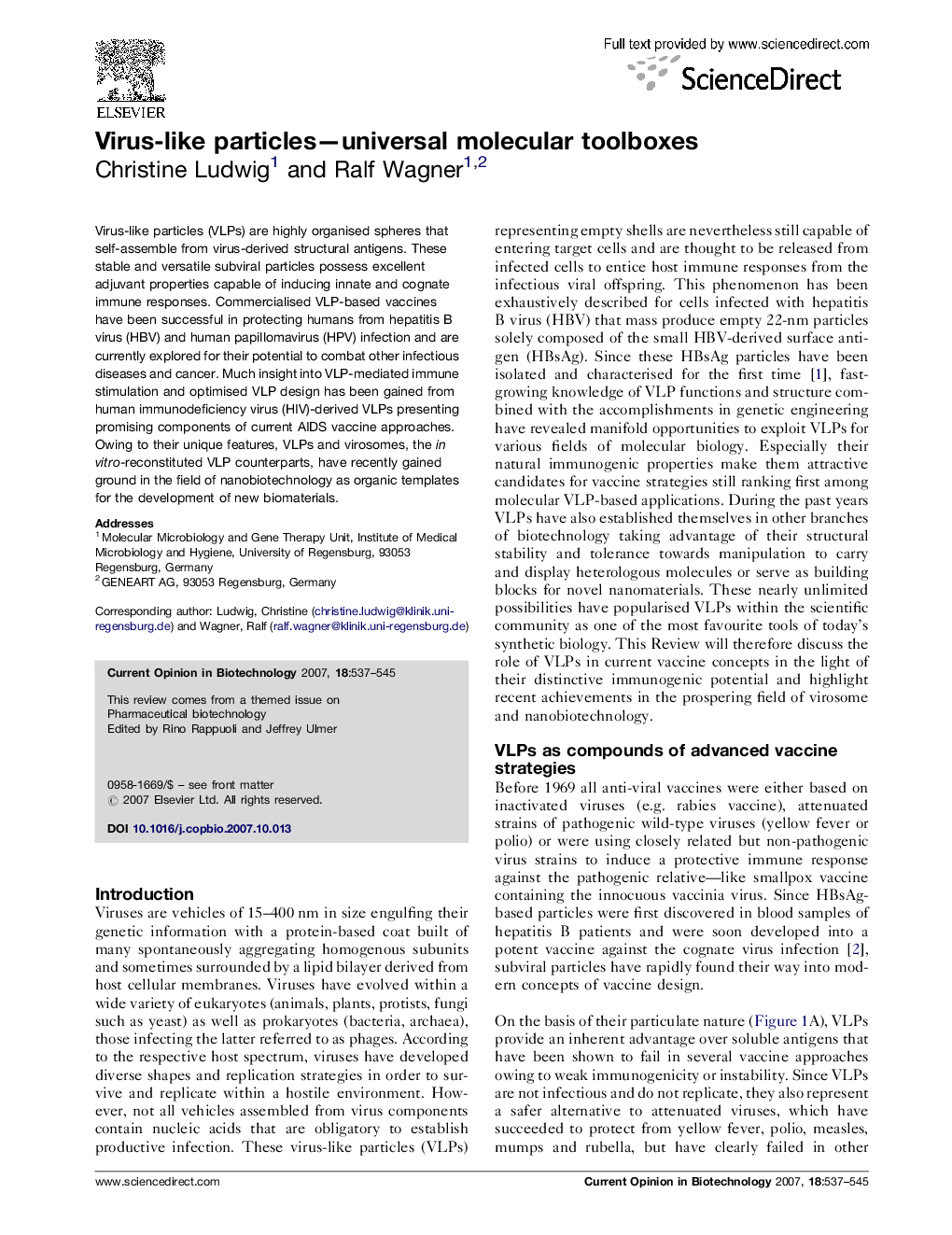| Article ID | Journal | Published Year | Pages | File Type |
|---|---|---|---|---|
| 16441 | Current Opinion in Biotechnology | 2007 | 9 Pages |
Virus-like particles (VLPs) are highly organised spheres that self-assemble from virus-derived structural antigens. These stable and versatile subviral particles possess excellent adjuvant properties capable of inducing innate and cognate immune responses. Commercialised VLP-based vaccines have been successful in protecting humans from hepatitis B virus (HBV) and human papillomavirus (HPV) infection and are currently explored for their potential to combat other infectious diseases and cancer. Much insight into VLP-mediated immune stimulation and optimised VLP design has been gained from human immunodeficiency virus (HIV)-derived VLPs presenting promising components of current AIDS vaccine approaches. Owing to their unique features, VLPs and virosomes, the in vitro-reconstituted VLP counterparts, have recently gained ground in the field of nanobiotechnology as organic templates for the development of new biomaterials.
